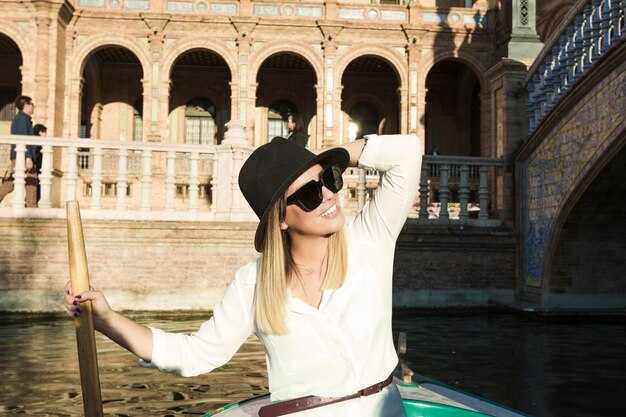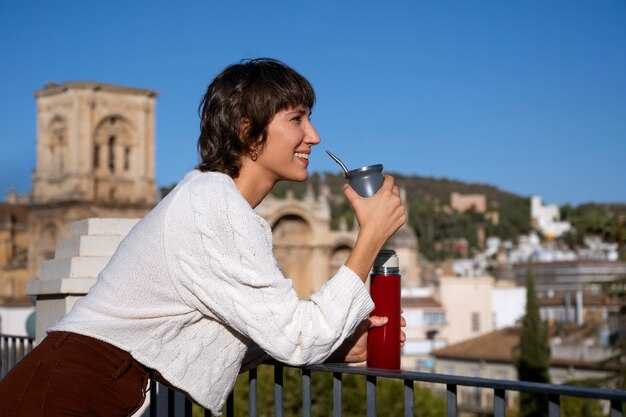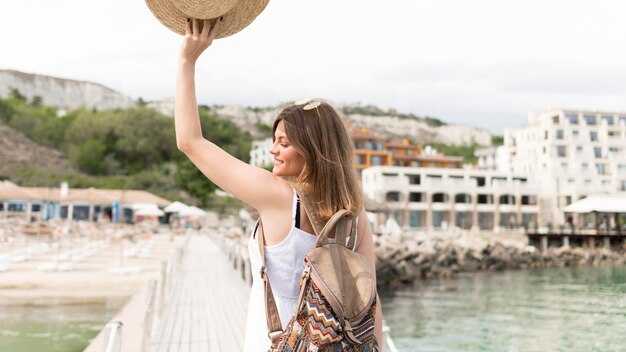Begin with an unmissable two-and-a-half-hour itinerary that kicks off at the Colosseum, threads through the Roman Forum, and climbs Palatine Hill. depending on ticket times, you can tweak the pace, but this classic start grounds you in history and sets momentum for the day. The area around these sites spans hectares of parkland, offering spaces to pause for photos and espresso breaks.
Venture into lesser-known lanes to balance the crowds: the Aventine keyhole view, the quiet courtyards around Piazza di Santa Maria in Trastevere, and a staircase climb that reveals a citys skyline beyond ancient walls. This balance makes your day feel intimate even with a thousand visitors in the main squares.
Then trace the hadrians path toward Castel Sant’Angelo and the altar of the Fatherland, where a broad staircase and terraces deliver sweeping views and a citys century of history.
In the Forum area, read plaques that cover a century of daily life, from republican rites to markets, and then swing by the centrale rail hub near Termini for a quick espresso to recharge.
those who believe Rome is only about grand monuments will find depth in the small streets around Trastevere and Testaccio; lets tailor the afternoon, discovering lesser-known churches and an altar, depending on what you read on-site and where you feel drawn down winding lanes.
How to reach Piazza del Campidoglio from Termini or the Metro

From Termini, ride Metro Line B toward Laurentina to Colosseo (about 6–8 minutes). Exit and follow Via dei Fori Imperiali for roughly 900 meters, then ascend the Cordonata to Piazza del Campidoglio. The total time from Termini is around 25–30 minutes, depending on crowds. You’ll pass the Forum and catch a tall column on the way, and the stone catches a warm gold hue as you climb.
As an alternative, take Line A from Termini to Spagna, then walk north on Via del Corso toward Piazza Venezia and ascend the Capitoline steps to the square. This route adds a bit of urban walking but offers a different perspective on Rome’s layout and takes about 30–40 minutes in total.
Nearby Campidoglio you’ll find quick lunch options with fried snacks and sandwiches. It’s possible to purchase a guided or skip-the-line ticket for the Capitoline Museums to maximize time. On side streets you’ll notice random shops and even there,santangelo postcards for sale.
If you’re curious about art along the way, Caravaggio fans can extend the day with a couple of works in nearby churches, or plan a separate stop later. The walk still keeps you in an urban rhythm, with nearby parks and the river scenery along the Tiber providing chances to pause, learn, and post favorite experiences of your trip, almost like a local. It’s a simple route that helps you feel the city’s character and (if you’re lucky) discover a favorite corner you’ll want to revisit with friends.
Best time to visit Piazza del Campidoglio to minimize crowds
Visit at first light on a weekday, between 7:00 and 9:00, to enjoy Piazza del Campidoglio with minimal crowds and crisp light on the marble. Arrive early to descend the staircase without rush, soak in the site, and enjoy quiet views toward the dome across the Tiber. From this vantage you may spot peters across the water while the romans’ houses line the palatine slopes and the spagna area hums softly in the distance.
When to go for the calmest experience

Seasonal pattern favors late autumn and winter for the smallest crowds; spring and fall weekends bring more visitors. Plan weekday visits, preferably Tue–Thu, in the 7:00–10:00 window to keep the pace relaxed. If you must visit later, target a late afternoon slot around 16:00–17:30 when light softens and the initial rush subsides. This timing suits leisure planning and gives time to stroll toward the giardino, maybe grab carciofi from a nearby stall, and enjoy a magical moment on the site. For a basic loop, follow the corso toward the spagna end and keep your eye on the palatine façades as the dome glints above the rooftops. It’s a moment loved by romans who appreciate the calm. If you want to stay comfortable, pack a small bucket for a quick snack break.
Where to stand and what to do for the best photos
Stand on the smaller staircase that leads into the giardino to avoid crowding the main route and to frame the villa façades with the dome rising behind. From the edge of the terrace you gain a view along the Tiber toward peters and the river’s curve. If you wish, step inside the state rooms to see maria legends and inscriptions, then return outdoors for a wider shot that includes the houses and the corso line below. This simple route, with a touch of basic planning, keeps shoulder-to-shoulder crowds away and makes it easy to enjoy the magical Italian light. Further, a quick stroll toward the Palatine area lets you compare the old villas and the modern Capitol complex, a reminder of how romans loved this site for centuries.
Where to start your walk around Capitoline Hill for maximum impact
Begin at the steps on capitoline hill for an outstanding first impression. From this terrace you frame the city with the most dramatic view toward the archaeological lines of the Forum below and the urban life around capitoline.
Next, head toward the Capitoline Museums for a concise overview; admission is separate, and buying online helps avoid lines for the most popular rooms.
Inside, pick a couple of highlights: classical statues, mosaics, and a terrace overlook that explains how the ancient world met the Renaissance. The pieces found here anchor capitoline life and give your feet a sense of standing on history.
After the museums, descend the ceremonial stairs toward the Forum, following the lines of arches and the remains of ancient walls. These views reveal the strata of Rome and build a direct link from temple foundations to later rooftops, with a hard edge that sharpens your sense of place.
From the Forum, stroll along corso toward santangelo (Castel Sant’Angelo) for a compact urban loop; on your left you glimpse the castle and on the right a living slice of urban life.
For a perfect night cap, return to the terraces after sunset when lamps glow and the city turns into a stage. The views from capitoline at night are outstanding and the glow emphasizes the marble and stone textures.
maria explains that you should pace the walk to fit your plans, and that a short stop near the fountains refreshes the mind. Ask her where to find the best viewpoints and the exit to the next leg of your Rome day.
A 1.5–2 hour loop is typical, with extensions to include the museums or Castel Sant’Angelo adding more time. Check official sites for current admission times and tickets; think about arriving before mid-morning to avoid crowds and to keep the total pace comfortable.
Must-see sights on the Piazza del Campidoglio and nearby buildings
Begin atop the terrace for a dawn view over the Forum and the hills beyond, then descend Michelangelo’s staircase into the square’s precise geometry. The 16th-century redesign ties the space together with a central axis that guides the eye from the slope to the statue at the center.
Two palaces anchor the square: Palazzo dei Conservatori on the west and Palazzo Nuovo on the east. Within these wings, the Capitoline Museums gather ancient bronzes, carvings, and canvases that reflect Rome’s long arc of eras. The Lupa Capitolina, a bronze sculpture of the she-wolf with Romulus and Remus, sits in the Conservatori, while the equestrian statue of Marcus Aurelius is housed in the galleries nearby. Each room offers a different angle on Rome’s past, so plan a quick pass through both wings.
From the terrace, the view spans arches that thread the Forum with the surrounding hills. The central column-like elements anchor your photo, and the staircases frame the skyline. If you visit before crowds, you have a better chance to study the details and see how the arch lines guide your gaze toward the Forum’s ancient remains.
Keep an eye out for a Vespa gliding by on the street below–Rome delivers small, vivid moments as you map your plan for the next stops. A Vespa with a quattro engine adds a touch of modern pace to the ancient stone. Sit for a moment on a bench, forget the rush, and map your path through this compact cluster of history.
| サイト | ハイライト | ヒント |
|---|---|---|
| Piazza del Campidoglio terrace | Panoramic view facing the Forum, Palazzo façades, central positioning of the equestrian statue | Best at dawn or late afternoon; wear comfortable shoes |
| Palazzo dei Conservatori | Bronze works, Lupa Capitolina, early modern paintings, approachable galleries | Allow 40–60 minutes; free inner courtyard entry |
| Palazzo Nuovo | Classical sculpture galleries, refined marble statues | One to two rooms with long sightlines; close to the terrace |
How to pair a Capitoline Museums visit with the Piazza experience
Sure, buy skip-the-line tickets for Capitoline Museums and start early, then stroll to the Piazza del Campidoglio to absorb heritage and city energy in one seamless motion. Even with popular times, you’ll see lines around the piazza, so skip-the-line access helps keep the flow smooth.
The museum complex sits on Capitoline Hill, spanning several hectares, and connects to the ancient forum and surrounding squares, creating a compact block of history with pretty city views.
As you move from galleries to the piazza, statues line the terraces, always offering dramatic backdrops for photos. Today’s travelers expect a smooth transition, so plan this pairing as a leisure loop that keeps you moving and avoids delays.
Two practical steps to combine visits
- 朝早くにカピトリーノ美術館からスタートし、優先入場を利用してコンスタンティヌスの胸像や瀕死のガリア人などの見どころへ。ギャラリーの見学に約60〜75分かけた後、カンピドリオ広場へ向かい、市街の景色を眺めたり、コレクションの中でもお気に入りの彫像を鑑賞したりします。
- 広場から、トリニタ・デイ・モンティに向かって歩き、時間があれば寄り道をしてください。それから、サンタ・マリア・イン・アラチェリに行き、聖母像を見て、丘に眠る歴史を感じてください。途中の噴水をチェックして、お気に入りの写真スポットを選び、急ぐのではなく、雰囲気を味わえるようにペースを緩めて、その瞬間がいつまでも続く思い出になるようにしましょう。
その後、近くのピザ屋でピザを買って、休憩を取りましょう。このルートは、気軽に旅を楽しみたい旅行者に人気があり、特に初めて訪れる人にとっては、今日ますます魅力的な選択肢となっています。
カンピドリオの階段とファサードの写真撮影の角度と視点
具体的な推奨事項から始めましょう。カンピドリオの階段下の角から、テクスチャとスケールを強調するために、低い、クローズアップのショットから始めます。この角度は、像の後ろにテラスがそびえ立つ一方で、中心軸を明確に読み取らせます。
-
下からのベースアングル:広角レンズ(フルフレームで16-35mm、APS-Cで11-22mm)を取り付け、f/8、1/125秒、ISO 100で撮影します。これにより、手すりと人物が明るい空に映えます。垂直線を真っ直ぐに保ち、下の通りが中心軸に向かって誘導線になるようにします。近くの家や通りの端を含めて、コンテキストを伝えます。それらが構図を固定し、シーン全体のリズムを決める方法を理解できるでしょう。歪みが発生する場合は、レンズを完全に配置することはできません。短い焦点距離ですぐにショットを撮り、再構成します。このアングルが、目が前景から記念碑的なファサードにどのように移動するかを教えてくれることは間違いありません。
-
左隅のスリークォータービュー:通りに近い角から、スリークォーターの角度に移動し、パラッツォ・セナトーリオを中央に、コンセルヴァトーリとヌオーヴォを両側に配置し、テラスが上に積み重なるようにフレームで囲みます。24-70mmを使用して、建築と空間のバランスを取ります。建物が広場とどのように並んでいるか、テラスがどのように視線を上に導くかを示す必要があります。空を背景にした城のような石の塊は、力強いシルエットを生み出し、通り沿いの大使館の窓は、奥行きを加える微妙な反射を生み出す可能性があります。それらは何世紀にもわたる手入れを通して整然と保たれており、その詳細は細部に見ることができます。
-
中央軸上からのテラスの正面ショット:広場の中央テラスまで登り、3つのパラッツォが統合された正面を形成するように、ファサードに直接向かって撮影します。長めのレンズ(50-135mm)は奥行きを圧縮し、手すりに沿った彫像をより近くに感じさせます。この眺めは、古代の石の完全性を建築を通して伝えます。遠くにパラティーノの丘やフォロを含めて、大きさを表現することもできます。このアプローチは、3つの構造物と、それらが街の景観全体で占める空間の関係を理解するのに役立ちます。正面からの構図が統一と永続性を伝えることは間違いありません。
-
パラティーノと庭園を背景にした遠景:広場でもう少し後ろに下がって、パラティーノを背景に丘の庭園を捉えましょう。このロングショットは、建築物がどのように景観の中に溶け込んでいるかを示し、広場を散策した後に場所の感覚を与えます。近くの大使館の窓が光を捉えている場合は、その反射を利用して古代の石に現代的な対比を加えましょう。ファサード全体に線を走らせて、統一感を強調します。
-
手すりと彫像に沿った詳細:質感のクローズアップには、石が空と接する手すりに沿って撮影します。85mmまたは100mmの望遠またはマクロレンズを使用すると、彫刻されたモチーフ、窓のフラワーボックスの花、石の微妙なパターンを分離できます。f/4〜f/5.6で撮影して、前景と背景を分離しながら、ディテールを鮮明に保ちます。この角度は、職人技のすべてを見逃さず、ファサード全体で繰り返される建築を強調するのに役立ちます。
夕暮れ時や夜間のオプション:中央軸はゴールデンアワーに近づくと暖かく輝きを増します。三脚を立てて2〜4秒の露光で、通り沿いの光跡や石畳の反射を捉えてみてください。また、この休憩時間を利用して、夜が更けるにつれて広場の周りの庭園や公園を比較検討し、建築物が特別なアンカーとして残る様子を観察しましょう。日没後には、近くのテラスへ散歩してワインを飲みながら撮影した写真を見直し、構図がタイトに保たれているか、当初の計画に近いかどうかを新たな目で確認するために戻ってくることを検討してください。



コメント